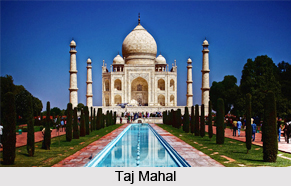 The monuments of Uttar Pradesh play a major role for the millions of tourists. These monuments are the example of incredible arts narrating the glorious past of the state. The numerous monuments present in Uttar Pradesh reflect the imprints of several dynasties of the bygone era. These wonderful creations represent the rich history, trade, language and the cultural heritage of the province.
The monuments of Uttar Pradesh play a major role for the millions of tourists. These monuments are the example of incredible arts narrating the glorious past of the state. The numerous monuments present in Uttar Pradesh reflect the imprints of several dynasties of the bygone era. These wonderful creations represent the rich history, trade, language and the cultural heritage of the province.
From Mughal era to British Raj, this state has preserved its great history in its monuments. Almost each and every rulers of this state such as Nawabs of Oudh, Mughals and British rulers have contributed their skills in terms of architecture. The major memorials of Uttar Pradesh are scattered through the cities like Lucknow, Fatehpur Sikri and Agra.
Significant historical monuments in Uttar Pradesh
Most of the monuments of Uttar Pradesh are based on Mughal architectural styles which are mainly the fusion of Persian and Hindu architecture. Mughals constructed lots of historic monuments with a wonderful stylized form in a typical Islamic style, and also the ones constructed during the British era. The major ones are the Church complex and The Residency in Lucknow.
Taj Mahal
The most remarkable monument of Uttar Pradesh is the Taj Mahal, constructed during the Mughal period. It was commissioned in 1632 by the Mughal emperor Shah Jahan to house the tomb of his favourite wife, Mumtaz. This monument is one of the seven wonders in the entire world for its intricate calligraphy and geometric designs.
Agra Fort
Another famous monument of Uttar Pradesh is the Agra Fort that includes several other remarkable structures like Sheesh Mahal, amazing Diwan-i-Khas and wonderful Moti Masjid. It was the main residence of the emperors of the Mughal Dynasty until 1638, when the capital was shifted from Agra to Delhi.
Bada Imambada
Bada Imambada is also a famous monument present in the Lucknow city. The presence of chandeliers and glassware for the decoration of the inner sanctum is a unique feature of this monument. It was built by Asaf-ud-Daula, Nawab of Awadh in 1784. This imambara is the second largest after the Nizamat Imambara
Rumi Darwaza
Rumi Darwaza in Lucknow is an imposing gateway which was built by Nawab Asaf-Ud-Daula in 1784. It is an example of Awadhi architecture that stands sixty feet tall. It was modeled after the Sublime Porte in Istanbul
Chota Imambara
Chota Imambara, also known as Imambara Hussainabad Mubarak is located in Lucknow. Built as an imambara or a congregation hall for Shia Muslims by Muhammad Ali Shah, the Nawab of Awadh in 1838, it was to serve as a mausoleum for himself and his mother.
Buland Darwaza
Buland Darwaza or the "Door of victory" was built in 1575 A.D. by Mughal emperor Akbar to commemorate his victory over Gujarat. It is the main entrance to the Jama Masjid at Fatehpur Sikri.
Kashi Vishwanath Temple
Kashi Vishwanath Temple is dedicated to Lord Shiva and is one of the twelve Jyotirlingas, or Jyotirlingams. The temple is mentioned in the Puranas including the Kashi Khanda. The original Vishwanath temple was destroyed by army of Aibak in 1194 CE, when he defeated the Raja of Kannauj.
Fatehpur Sikri
Fatehpur Sikri is a town in the Agra District that was the capital of Mughal Empire from 1571 to 1585. It was founded by emperor Akbar who later abandoned it due to a campaign in Punjab.
Dhamek Stupa
Dhamek Stupa originated as pre-Buddhist tumuli, in which ascetics were buried in a seated position, called chaitya. After the parinirvana of the Buddha, his remains were cremated and the ashes divided and buried under eight mounds. The Dhamek Stupa was built in 500 CE.
Jhansi Fort
Jhansi Fort or Jhansi ka Kila is a fortress situated on a large hilltop called Bangira. It served as a stronghold of the Chandela Kings in Balwant Nagar from the 11th through the 17th century.
All Saints Cathedral
All Saints Cathedral, also known as Patthar Girja is an Anglican cathedral located in Prayagraj. Modelled after 13th-century Gothic style churches, it was designed by British architect Sir William Emerson in 1871. It was consecrated in 1887 and was completed four years later.



















